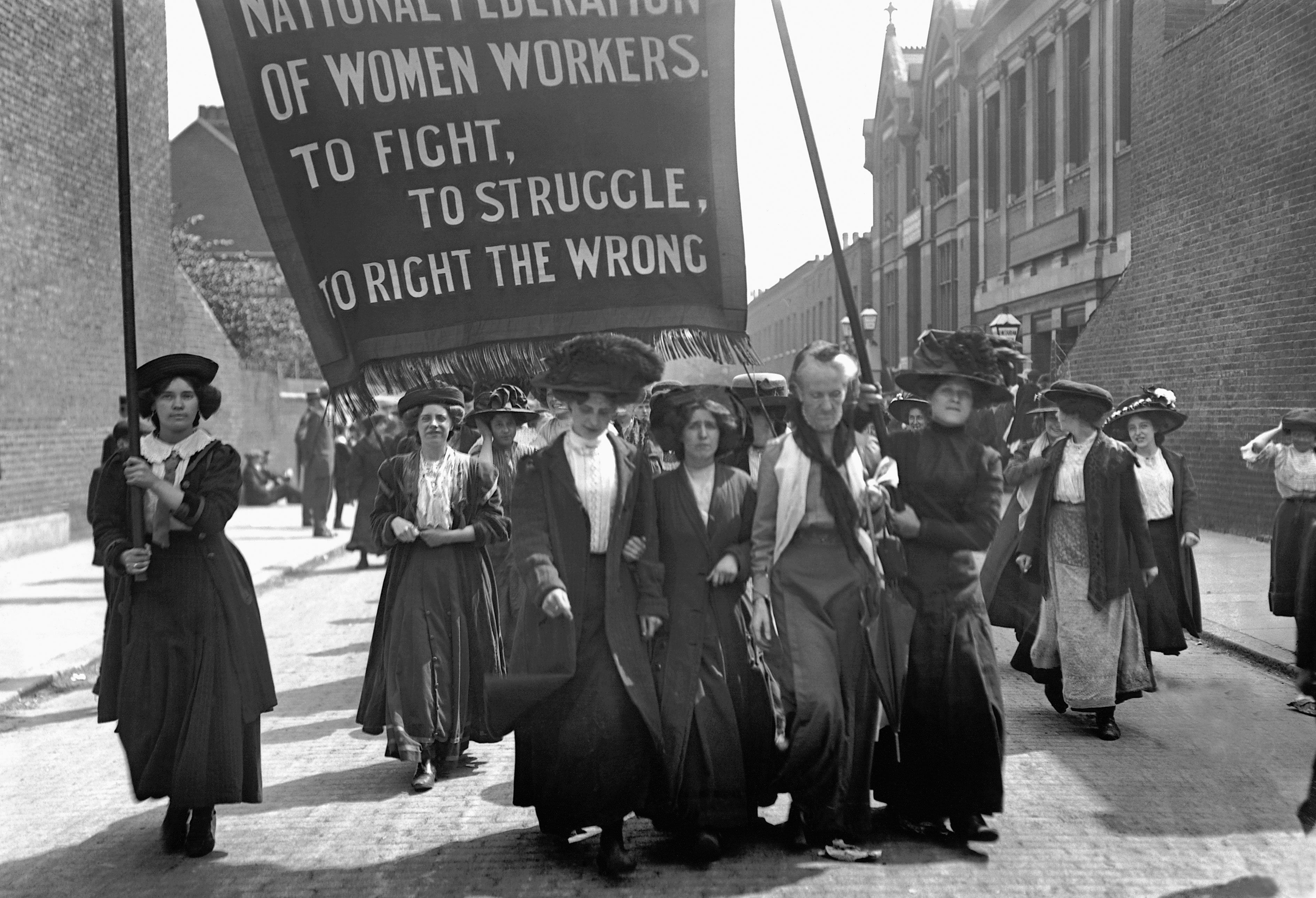- Home |
- Search Results |
- 100 years after The Sex Disqualification (Removal) Act, there’s still progress to be made
100 years after The Sex Disqualification (Removal) Act, there’s still progress to be made
December 23rd quietly marks a centenary since one of the most significant pieces of legislation in modern Britain passed, allowing women access to professions that previously had closed doors. 100 years on, social historian Jane Robinson looks at the achievements of the pioneering women who fought for gender parity.

In the history of women’s rights, there are certain books that stand out like landmarks. Ray Strachey’s The Cause (1928), about the fight for the vote and equal opportunities for women, is unmissable. So is Germaine Greer’s The Female Eunuch (1970) and more recently, Mary Beard’s Women and Power (2017). And there are certain people who made an indelible mark on history too: companions who make us think about the past and the present in a new way. One of my favourites is Gwyneth Bebb, born in 1889.
At Oxford, Gwyneth was among the first women to study Jurisprudence, or the theory and philosophy of law. In 1908, it was almost exclusively a male discipline. So why make that choice? It was a rash decision: at that time, women were not allowed anywhere near the legal profession and Gwyneth intended to work for a living. And why Oxford, which refused to award degrees to its female undergraduates until persuaded to do so by a pivotal Act of Parliament passed in 1919? An unladylike mixture of independence and ambition inspired her to do what had never been done before; that, and a measure of bloody-mindedness.
Gwyneth excelled at university. Her exam results would have pocketed her a first-class degree, had she been a man. As it was, she left with nothing more tangible than a warm glow of achievement – not particularly helpful when applying for professional posts alongside men with letters after their names.
Old-school doctors warned that thinking too much withered the womb
After Oxford, Gwyneth tried to access legal training but was denied, on the Alice‑in‑Wonderland grounds that women were not officially defined as ‘persons’ and only persons could be lawyers. This absurdity was impossible to maintain after World War I. By then hundreds of women like Gwyneth had helped Britain achieve victory, having taken men’s places on the home front or run military hospitals abroad.
When it passed in 1919, The Sex Disqualification (Removal) Act stated that no-one should be excluded by gender or marriage from the exercise of any public function, ‘or from being appointed to or holding any civil or judicial office or post, or vocation, or for admission to any incorporated society.’ So – though it took an Act of Parliament to do it – the gates of the Establishment slowly creaked open, at last. In January 1920 Gwyneth started reading for the Bar, while also juggling married life, brand new baby, and a full-time job. Life was hard, but ever optimistic, she looked forward to a brighter future.
Perhaps Gwyneth was naïve. Stodgy arguments against women in professions persisted. ‘Gentlemen’ would never stoop to taking orders from them: it was thought to be degrading and flew in the face of nature. Old-school doctors warned that thinking too much withered the womb and women continued to be refused high-calibre posts on the grounds of being… ‘plain’. And don’t forget the perennial claim that they couldn’t possibly work in a man’s world, as there were no ladies’ bathrooms. In short, the Establishment refused to change.
So despite the Act of Parliament, progress was slow. Many medical schools closed their doors to women from the 1920s until the 1940s, arguing that women doctors were a) hysterical and b) flooding the market. Legal chambers declined them as pupils. Architects comforted themselves with the well-known fact that women were congenitally feeble (it’s alright lads: ladies can’t climb ladders). Engineering workshops refused them apprenticeships and the Church – well, the Church was the Church. We all know that the first women Anglican priests were not ordained until 1994. Some of the professions – including teaching – instituted a marriage bar in blatant contravention of the Act, which meant that before World War II, women faced a stark choice between working, or becoming a wife and mother.
The quest for equality is a long game, and 100 years since the Act passed, we are playing it still
Against all this opposition, the pioneers not only penetrated the elite professions (even the Church) but thrived as hard-working, flesh-and-blood women facing all the pressures and dilemmas we do – and more. Gwyneth Bebb was right to be optimistic: women like her were stronger than they knew. Tragically, she suffered the ultimate feminine fate, dying following complications after the birth of her second child in 1921. But her determination and unquenchable spirit are inspiring, her legacy still felt today.
It can still take courage for a woman to admit an ambition to join the professional élite. The senior partner in a high-profile firm of solicitors recently confessed to me that she had to be pushed by a male colleague into applying for the position: she was too modest, feeling herself to be an impostor despite years of training and decades of experience. ‘Women still have to be asked to dance,’ she remarked, a little sadly.
That’s why role models like Gwyneth are so important. Gradually, person by person and institution by institution, habits alter and expectations grow. The quest for equality is a long game, and 100 years since the Act passed, we are playing it still. But we now have the proof of something the pioneers could never be quite sure of, because they hadn’t done it yet: ladies can climb ladders – as high as they like.
Jane Robinson is author of Ladies Can't Climb Ladders: The Pioneering Adventures of the First Professional Women, which is available to pre-order now.